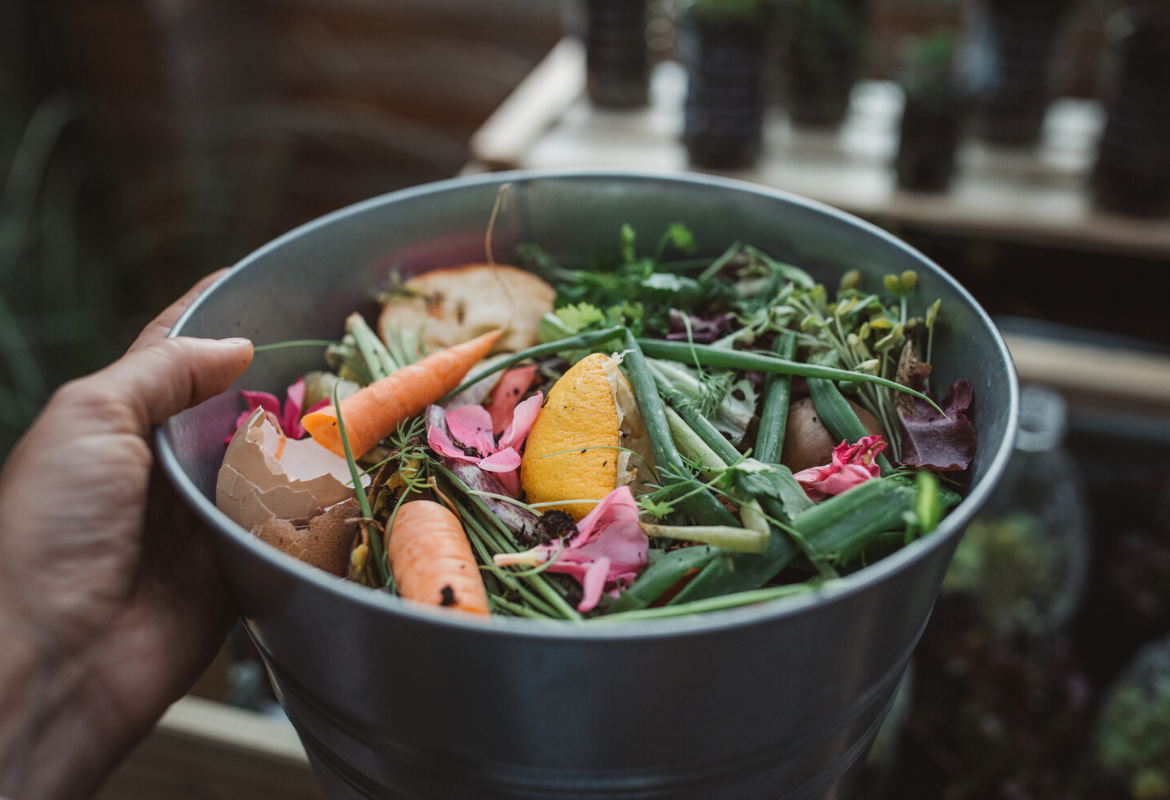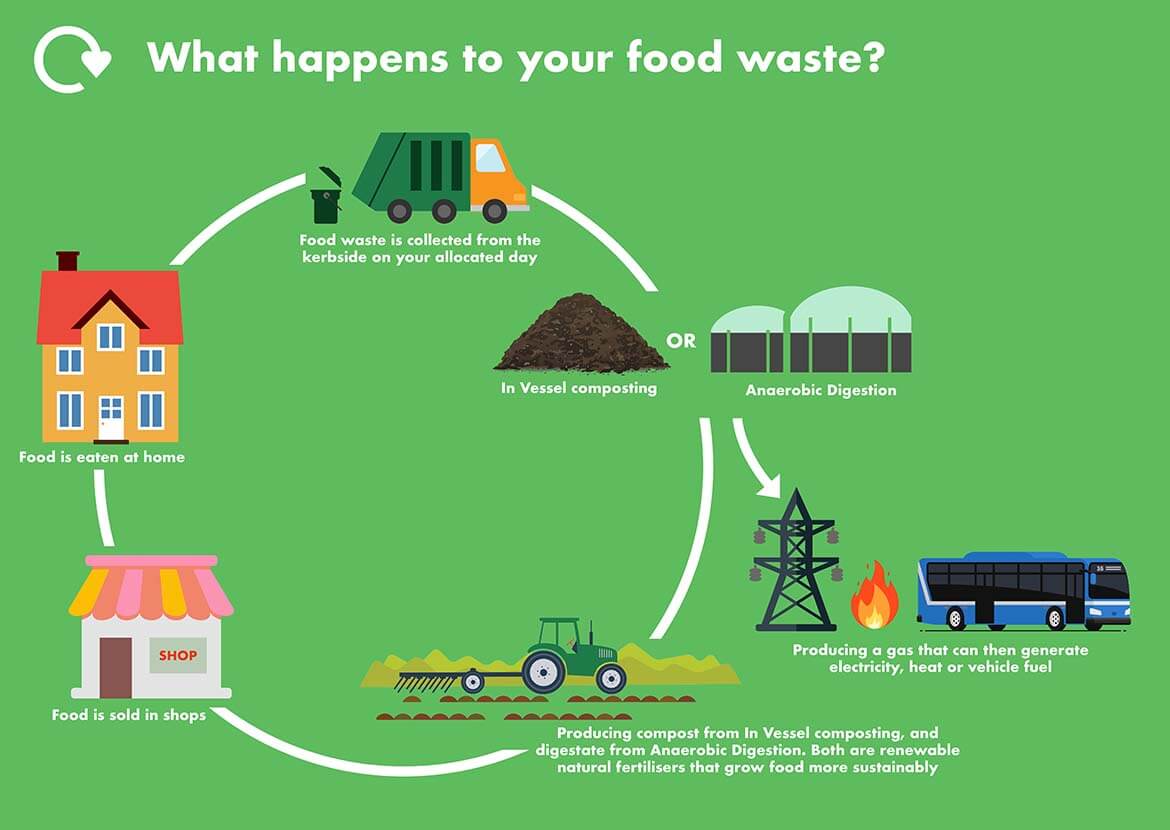
How is my food waste recycled?
The best thing that can happen to food is that it makes it to our plates and is enjoyed. However, some food waste is inevitable. Eggshells, banana peel and tea bags are never going to be on the menu.
If you live in an area that has a local food waste recycling collection service, you can use this to dispose of anything you can't eat or compost at home. But what happens to our food waste once it has been collected? Where does it go?
These unwanted or out-of-date scraps and leftovers can be recycled into good quality soil improver or fertiliser and even get converted into green energy which can help power Scotland’s homes.
What is food waste and why is it such a problem?
First and foremost, when food is wasted, all of the effort, energy and resources that went into growing, producing, processing, transporting, selling and buying it are also lost, along with the food itself.
The best thing you can do is to reduce the amount of food that is wasted in the first place as this will save you money and save carbon emissions. But when it comes to peelings, scrapings and leftovers, these can be unavoidable. As a golden rule, if you can’t use it, recycle it. It’s way easier than you think.
What food waste can be recycled?
Any and all uneaten foods including dairy, meat and bones, fruit, vegetables and peelings, rice and pasta, cakes and biscuits, eggs and eggshells, fish bones and shells, pet foods, tea bags and coffee grounds (you get the picture) can be recycled.
What can’t be recycled?
Anything that isn’t food, packaging of any kind, liquids such as milk, oils, and liquid fats.

What do I have to do?
Your local council will be able to advise you on the type of service they offer. Line the caddy with the supplied or recommended liner and empty all of the appropriate food waste into the caddy while taking care to prevent any packaging or non food items from going in.
Transfer the bagged contents to your outdoor food waste bin ready for collection.
What happens then?
Once the food waste is collected, there are several ways for food to be recycled including:
In vessel composting (IVC) - essentially the same process as traditional composting except it takes place in a closed environment where oxygen, moisture and temperature can be carefully controlled to ensure materials are efficiently processed and fully sanitised.
Food waste and garden waste from your household collections, and other commercial or industrial sources, are screened so any contaminants like plastics or metals can be removed. Then the materials are mixed and shredded.
The composting process then starts naturally as micro-organisms begin to break down the food and garden waste and release the nutrients, generating enough heat to raise the temperature of all parts of the composting mass to between 60-70°C for two to four weeks.
This speeds up the decomposition process and kills any harmful microbes or seeds which may have been present.
Once the sterilisation process is complete, the compost is left to mature in long open rows - known as windrows - or enclosed areas for 10-14 weeks with regular turning to stabilise the final product.
After this, careful testing ensures the quality and safety before the compost goes on to be used as a soil conditioner for gardens, landscaping and agriculture.
Anaerobic digestion (AD) - It may sound odd but the best way to understand AD is to think of it as something like a giant cows stomach.
Initially, AD takes place in a large sealed tank without oxygen (the cows stomach). You feed the stomach with biodegradable materials (known as biomass) including food waste, slurries, sewage, manure and other vegetal materials, which has been heated up to 35 and 55 degrees.
The biomass is then digested by naturally occurring microorganisms and bacteria, which produces a methane-rich gas (like a cow passing wind!) which can be used to generate renewable energy for electricity and to provide heat.
Or it can be further processed to provide gas to the grid or vehicle fuel. And then, the residual material called digestate is an excellent fertiliser for agriculture and in land regeneration.
Unwanted or out-of-date scraps and leftovers can be recycled into good quality soil improver or fertiliser and even get converted into green energy which can help power Scotland’s homes.

What's next?
Looking to the future, there are some really interesting solutions in development.
Insect farming is a good example as species such as Black Soldier Fly can consume huge amounts of certain types of food waste and produce protein which can be used as an animal feed, oil to be converted into biodiesel or other products.
This way, by recycling food waste into soil conditioner and fertiliser which are used to grow food sustainably, it closes the loop in food production.
Overall, whether the food waste is recycled by in vessel composting or anaerobic digestion - or even by feeding it to insects - everyone has a part to play.
You can help to reduce the amount of food sent to landfill which, in turn, helps to reduce harmful carbon emissions, by reducing what you waste in the first place, and by helping local councils to recycle your food waste.
